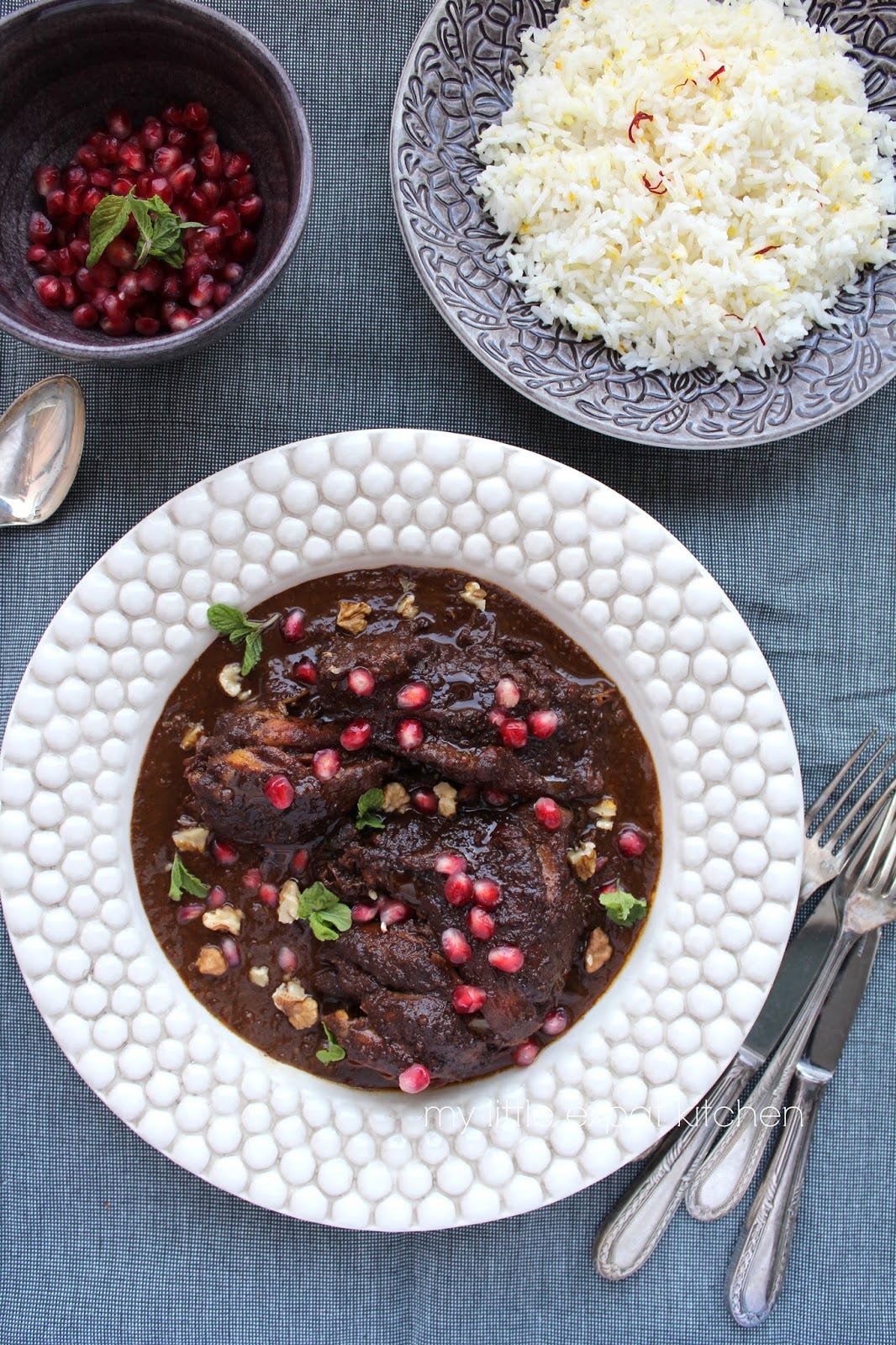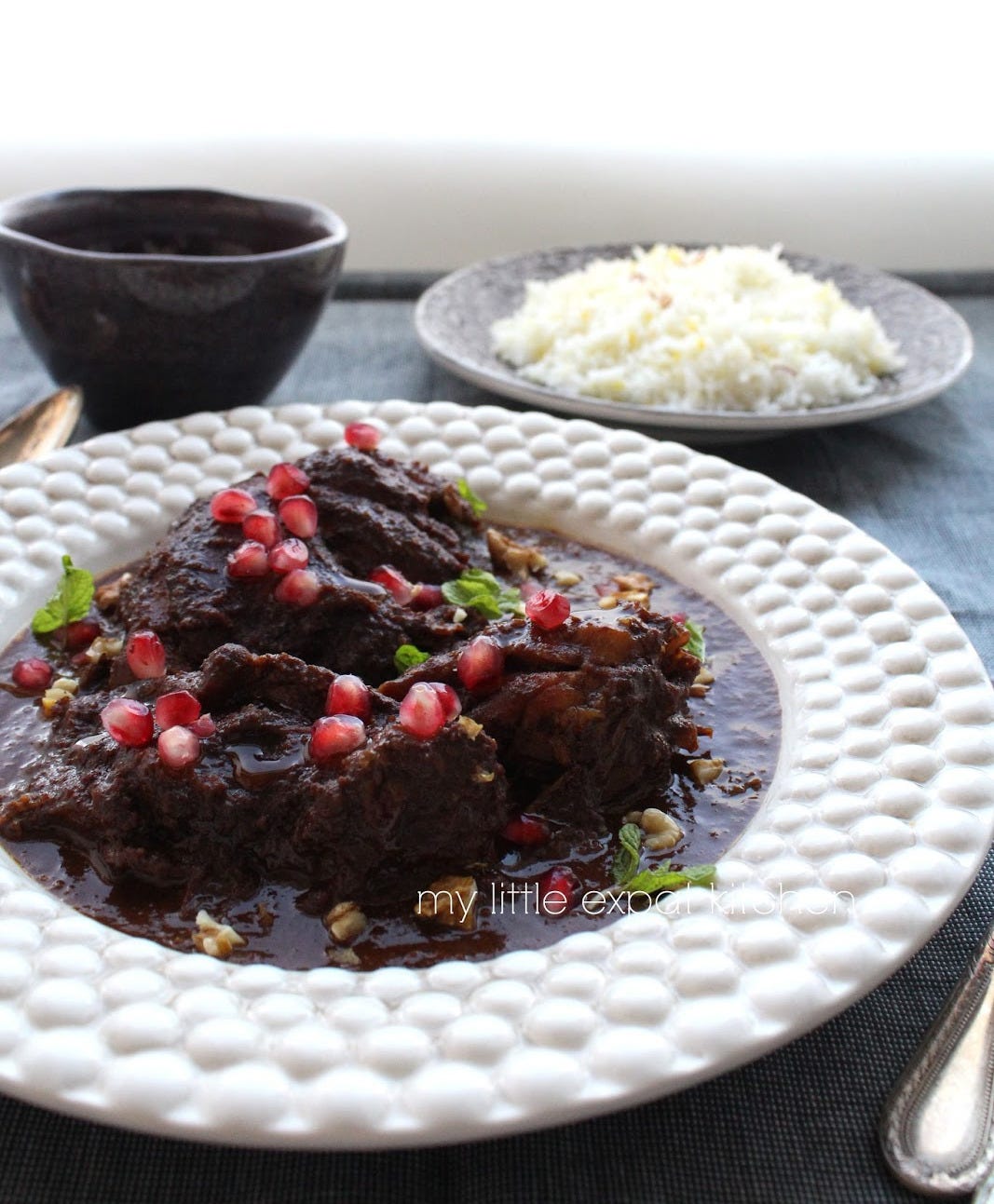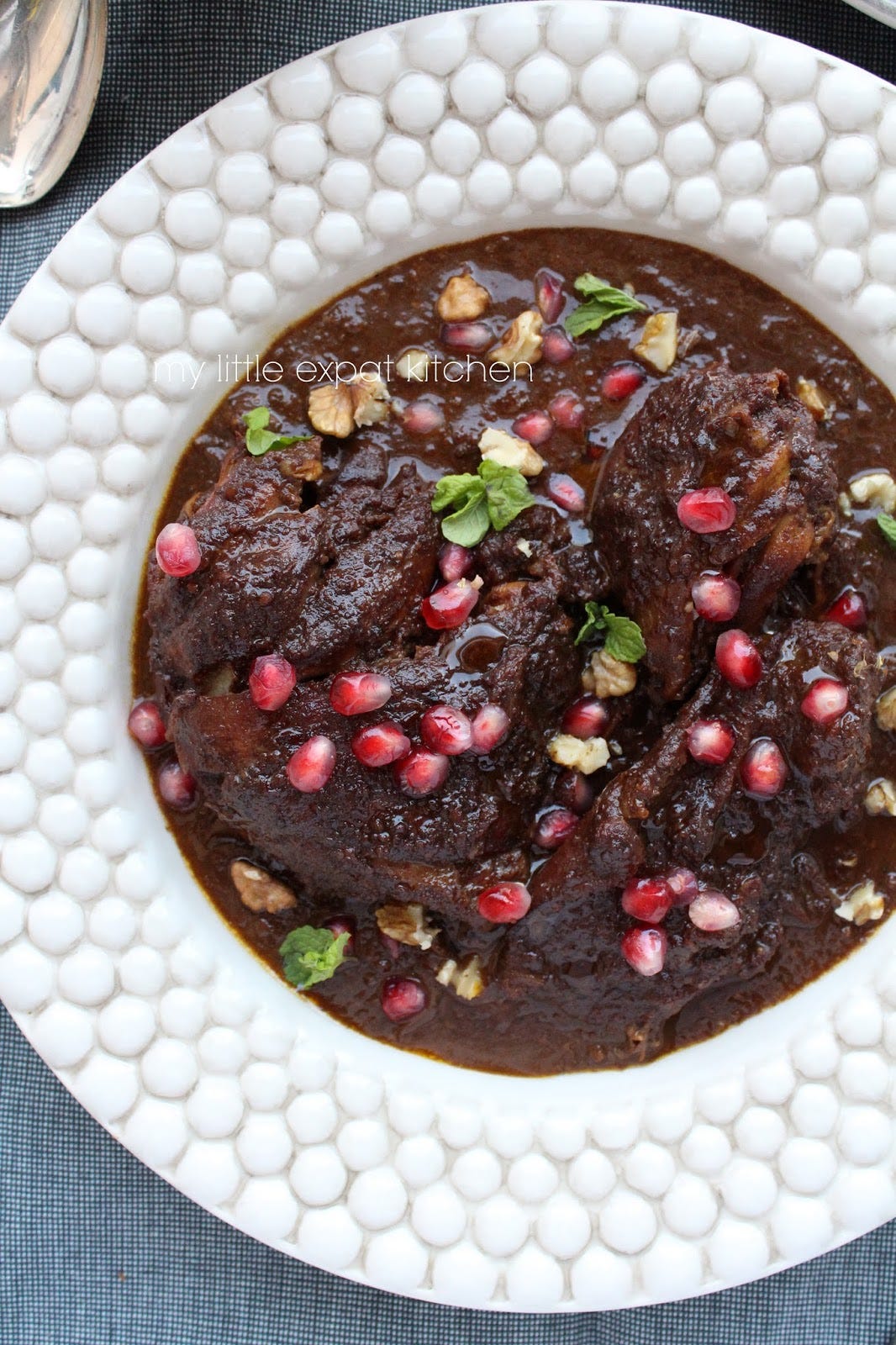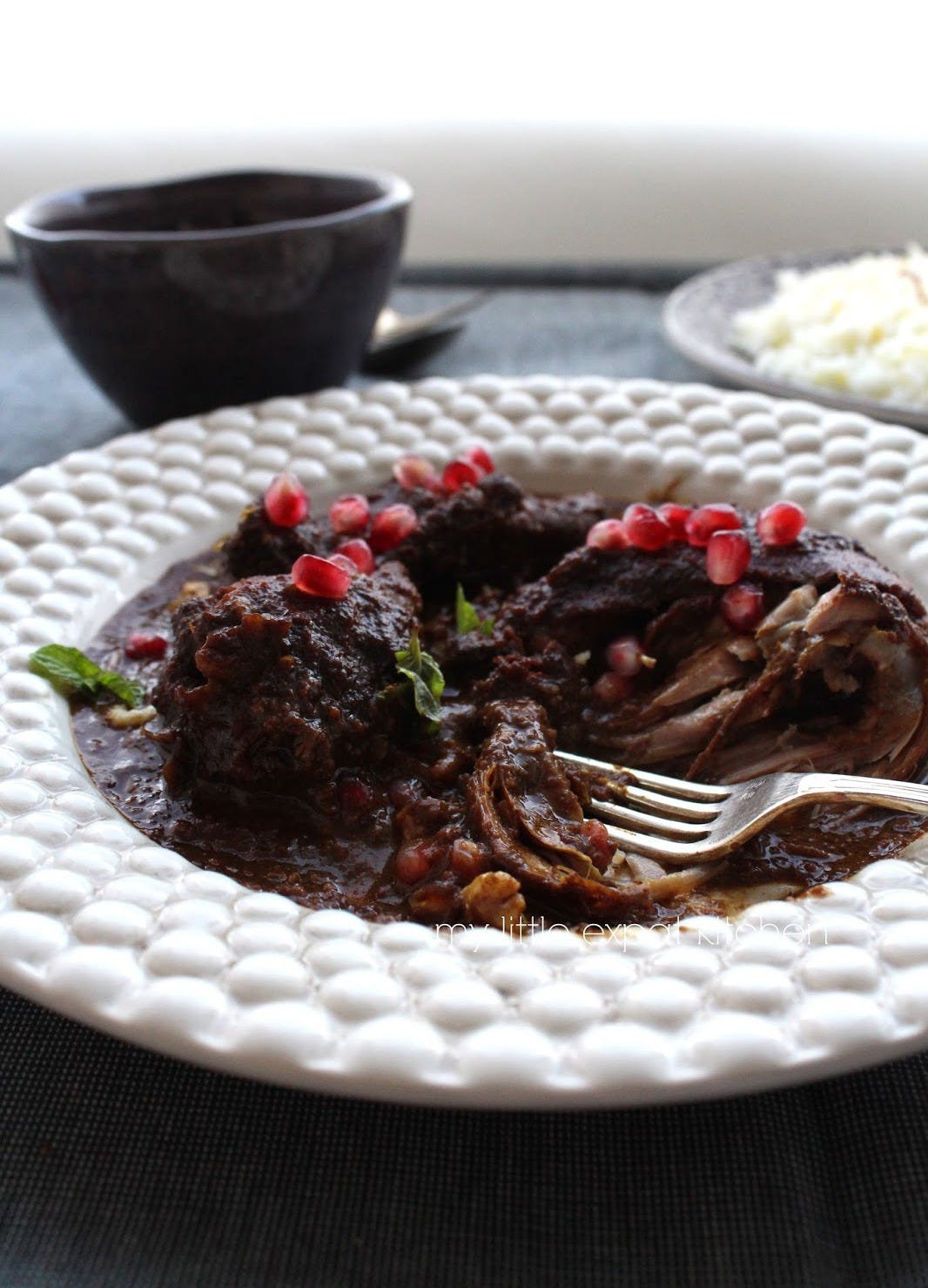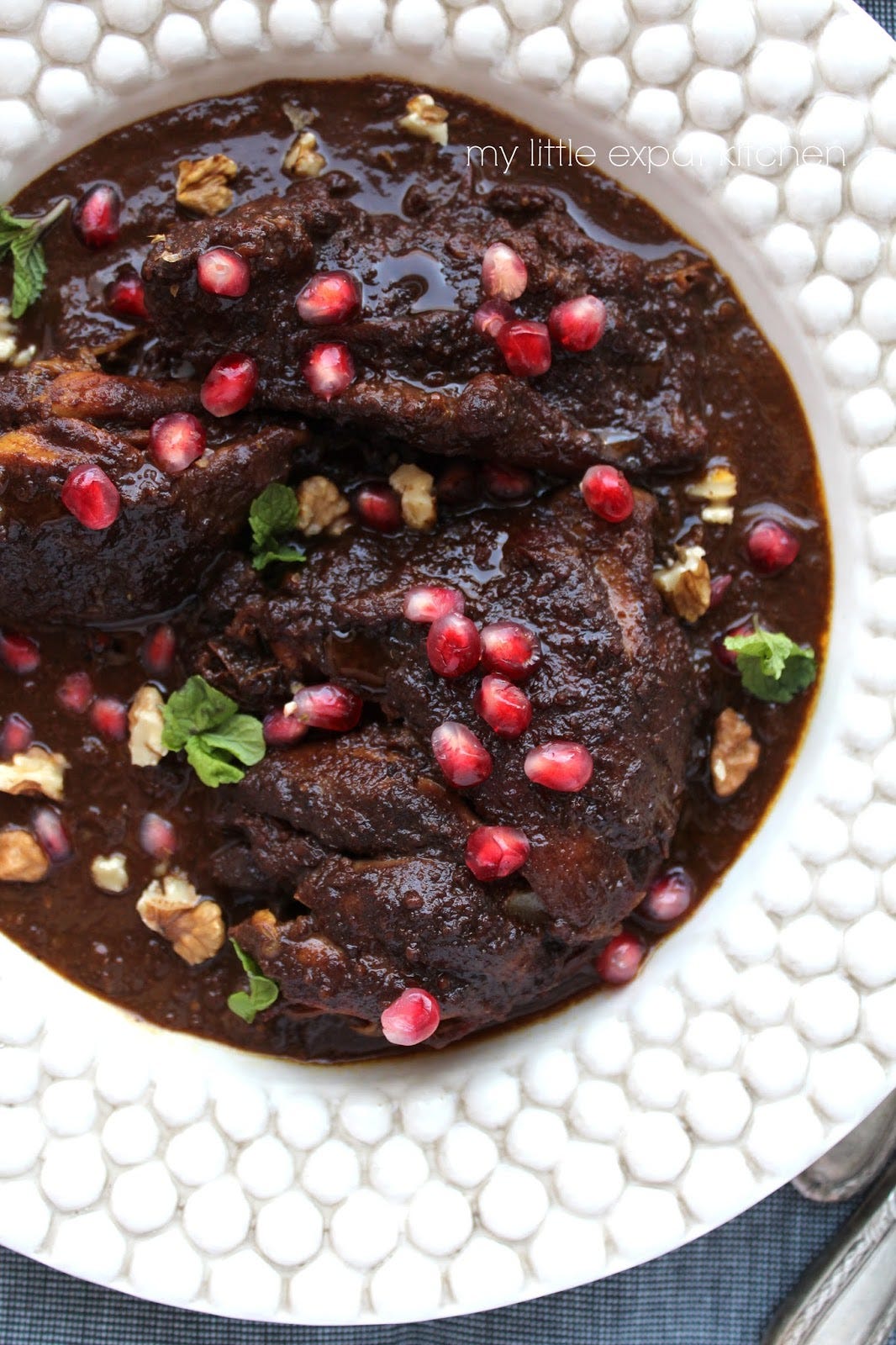Chicken and walnut stew with petimezi (grape molasses), and saffron basmati rice
A different Persian Fesenjan
Published originally on my blog on 10 December 2015
There are certain dishes that you fall in love with instantly. It may be a dish you’ve had at a restaurant or at that friend’s house who’s a great cook, a recipe you tried from a blog or cookbook, or even something you created yourself that turned out unexpectedly good. This dish is a mix of the above. It’s one I have tried at a friend’s house years back and that when I found the recipe for in a cookbook I got for my birthday last month, I played around with a few times, adapted it to suit my taste and the result was fantastic. I fell in love with it.
It is a chicken and walnut stew with petimezi (Greek grape molasses/grape-must syrup), and it may not be the best-looking dish you’ll ever come across, but it is seriously delicious. It is everything a stew should be and more; warming and comforting but also exciting and different.
It is based on a traditional Persian recipe named Khoresh-e Fesenjan, or just Fesenjan, which is a chicken and walnut stew with pomegranate molasses. I changed it to suit my Greek tastes by substituting the very tart pomegranate molasses with the sweeter Greek petimezi that has a far more interesting and intricate flavor in my opinion, and in order to counteract that sweetness and to provide sharpness and spiciness, I also added red-wine vinegar, tomato paste, saffron and ground turmeric.
I may be against messing with traditional recipes, and I hope any Persian friends out there don’t hold it against me for playing around with such a beloved dish of theirs, but this was incredibly good. The Persians eat this at celebrations and weddings and I can totally understand why. It is a marvelous stew.
The walnuts are ground and then cooked in water for an hour until they soften. The petimezi, the chicken and the rest of the ingredients are then added and they slowly simmer for about two hours, until the chicken becomes so tender that it falls apart with the touch of the fork and the walnut sauce takes on a deep, dark color.
I have a bit of a sweet tooth and this savory dish hits all the right spots. It’s a multilayered dish, mainly earthy and nutty from the walnuts, sweet from the petimezi but not overwhelmingly so, with subtle sharp notes from the vinegar. It’s meaty and deep-flavored, with the chicken falling off the bone but without losing its texture, and with the slightly bitter walnuts being thick and pleasantly grainy creating an almost chocolatey sauce.
The metallic flavor of the saffron and the turmeric adds another layer of complexity to the dish while the fresh pomegranate seeds on top provide acidity and crunch. They are not decorative, mind you, they do serve a purpose flavor-wise and texture-wise. The fresh mint that’s sprinkled on top adds freshness and vibrancy to the rich and thick sauce, and all those deep flavors and heady aromas are then paired with a saffron-scented basmati rice to ultimately create an intriguing dish.
Chicken and walnut stew with petimezi (grape molasses), and saffron basmati rice - A different Persian Fesenjan
This is a chicken and walnut stew meaning that the walnuts are an integral part of the dish and they are as much of a main ingredient as is the chicken; they’re not just the sauce you pour over the meat, so don’t be sparse with the walnut sauce, add it to your plate plentifully.
This stew needs 3 hours of cooking so take it into consideration when you decide to try it. Also, as with every stew out there, it is at its best flavor the next day and the day after.
This dish is perfect for a holiday/celebratory dinner, and since you can make it a couple of days ahead of time, it will free you up for other dishes you wish to make, chores, etc.
Don’t be tempted to use chicken with the skin on because the stew will be too fatty. The walnuts have enough natural oil to flavor the dish.
If you have any leftover walnut sauce you can serve it with rice, buglur, couscous or quinoa and some steamed or boiled root vegetables.





